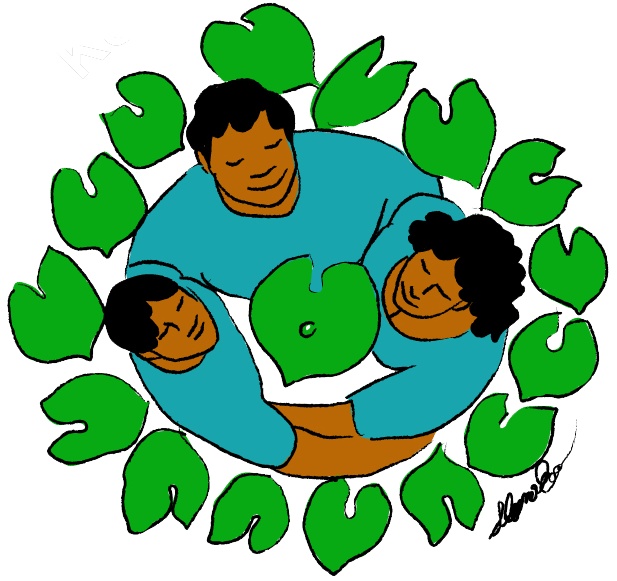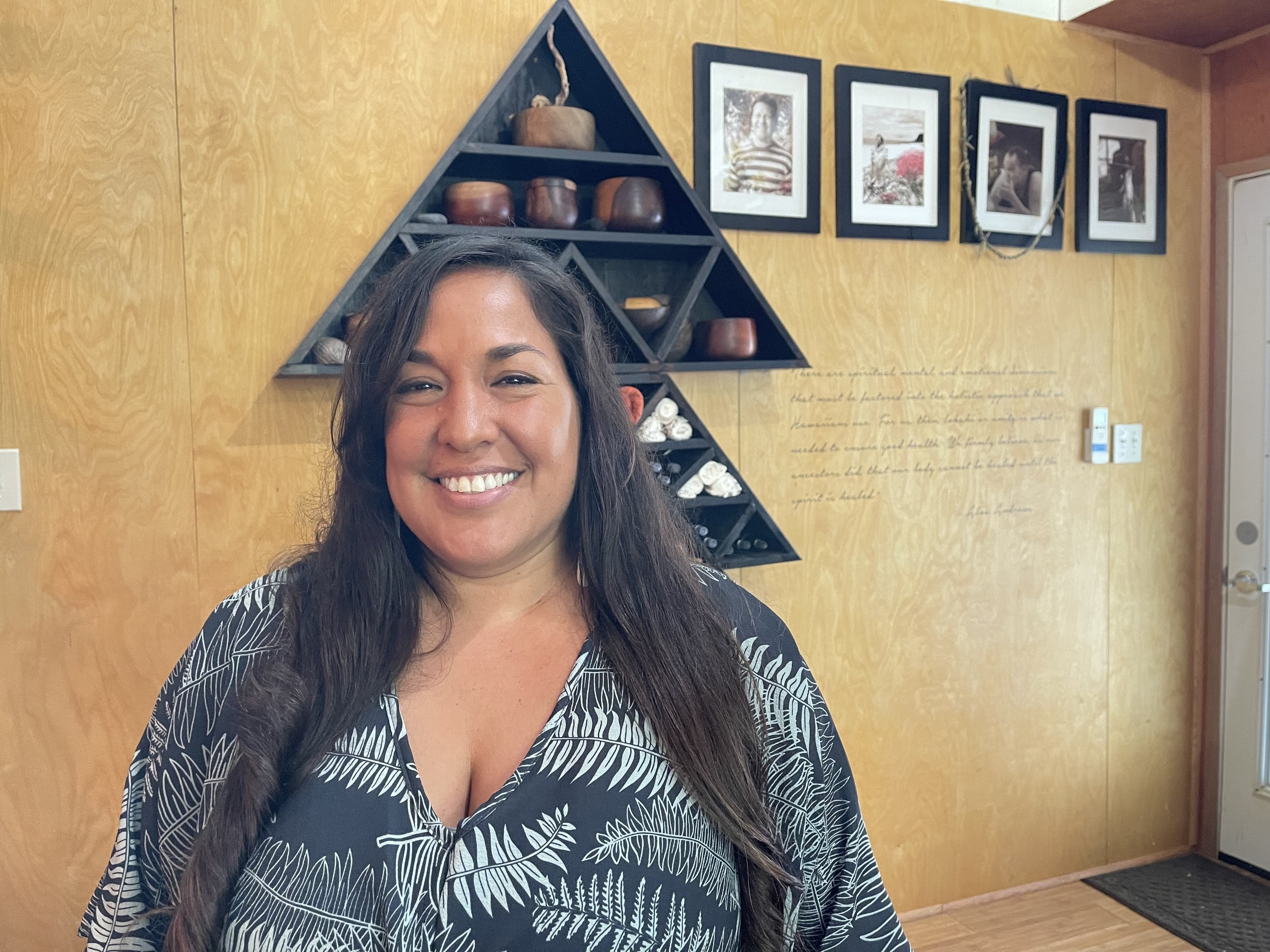Lomi: A Journey of Healing
Vanessa performs lomi on a patient. Photo courtesy of KKV Communications.
The journey to healing can look different for everyone. Whether it’s physical, emotional, mental or spiritual, the process has its challenges but also great accomplishments. KKV offers many paths to help with your healing journey. One path that isn’t always heard of is lomi.
Lomi is a traditional healing technique native to Hawaiʻi and has been passed down orally through generations of families. Typically, one member of the family is selected to be the family’s healer, and from there they learn how to administer lomi. Lomi, which means to “rub” or “knead”, is similar to massage therapy seen in many western practices. What sets lomi apart from a typical massage is that it has different levels of healing, not just physical. For example, a type of lomi called ʻōpū huli focuses on the stomach because it can hold past trauma. Administering lomi to the area can then begin to heal those traumas. “I see many patients with all sorts of concerns,” says KKV Lomi Practitioner Vanessa Zevallos. “Some are referred by Behavioral Health for mental health challenges, while others are experiencing physical pain. Lomi can help anyone and everyone.”
Hands at work. Photo courtesy of KKV Communications.
Lomi is just one of the many types of healing techniques that Hawaiians and many Pacific Island cultures practice. “Healing has a lot of layers,” says Vanessa. She explained that no matter what someone is going through, the healing journey is not just one single path. Other healing traditions that work hand in hand with lomi include lāʻau lapaʻau and hoʻoponopono. Lāʻau lapaʻau is the use of native plants and herbs to treat ailments and injuries in place of typical medications. Hoʻoponopono is a spiritual practice in the form of therapy that draws on forgiveness and reconciliation. “All of these healing techniques work together to care for the whole person,” explains Vanessa. “The commonality between the methods is the connection to ʻāina. I've seen similar practices in many indigenous cultures.”
Lomi, which means “to rub”, can also include stretching. Photo courtesy of KKV Communications.
Here at KKV, we have been working to make holistic healing options like lomi more accessible for our community. Lomi practitioners like Vanessa have begun to see lomi more incorporated into western models of care, specifically here in Hawaiʻi. “We want to give people an alternative,” says Vanessa. “It's easy for a patient to go to a doctor for medicine, but sometimes these [indigenous] practices can go deeper and heal in a different way.” Lomi can not only heal people, but also connect them back to their cultures. Vanessa says she's come across patients who had their indigenous practices taken away from them while growing up. But after being introduced to healing techniques like lomi, lāʻau lapaʻau, and hoʻoponopono, it reminded them of practices they used to do in their own cultures but forgot about. “It's all about connecting us back to the ʻāina,” explained Vanessa. “These practices are so important and familiar to people. I'm glad I can help them find that again.”
KKV Lomi Practitioner Vanessa Zevallos. Photo courtesy of KKV Communications.
Vanessa's journey to becoming a lomi practitioner began when she was a little girl growing up in Peru. At the time, she didn't know lomi would be her calling in life. Her grandmother was a well-known healer in her community, practicing many techniques similar to those in the Hawaiian culture. Vanessa's dream was to help people when she grew up, just as her grandmother did. A friend suggested she look into massage therapy to fulfill that dream. Her plan was to go to Hawaiʻi to study and then return home to Peru, but she had a change of heart. “During my training, I was exposed to lomi and it immediately reminded me of my grandmother,” says Vanessa. “I was so drawn to these other forms of healing.” She says it felt like a full circle moment as she was able to embody her grandmother as a healer. She has been practicing lomi in Hawaiʻi for 15 years now. Vanessa made her first connection to KKV as a volunteer at Hoʻoulu ʻĀina. “During my first time there, it really reminded me of my home in Peru. I love what Hoʻoulu ʻĀina stands for.” She has been volunteering there since 2012, and officially joined the KKV ʻohana as a lomi practitioner about two years ago.
If you would like to begin your healing journey with Vanessa, your KKV provider can help you schedule an appointment with her.








